 There, at least that’s over. That’s him there to the right, apparently ordering two. You know, this may have been the St. Patrick’s Day that I’ve always wanted. Quiet. By force of law. Even last year, during the first week of something being quite wrong, there were college idiots half smashed on a Tuesday loitering around the downtown square, wearing green things made of plastic. Amateurs. Appropriating plastic coated amateurs. In 2017, I asked why craft beer hated the day. I don’t think that is the same now but it’s mainly because craft beer has ceased to exist in the same sense four years on. Not much taking a unified stand against anything these days. Not much of a soap box to stand on anymore so much as being an object of the inquiries.
There, at least that’s over. That’s him there to the right, apparently ordering two. You know, this may have been the St. Patrick’s Day that I’ve always wanted. Quiet. By force of law. Even last year, during the first week of something being quite wrong, there were college idiots half smashed on a Tuesday loitering around the downtown square, wearing green things made of plastic. Amateurs. Appropriating plastic coated amateurs. In 2017, I asked why craft beer hated the day. I don’t think that is the same now but it’s mainly because craft beer has ceased to exist in the same sense four years on. Not much taking a unified stand against anything these days. Not much of a soap box to stand on anymore so much as being an object of the inquiries.
Breaking: craft beer loves generic globalist multi-internationalism.
In days of yore brewing news, Martyn has undertaken the work I’ve been begging him to undertake for at least a decade: exploring the 1898-1899 Canadian Inspectorate of Foods and Drugs study on stouts and porters:
…the average strength of the Canadian porters was 5.73 per cent abv, nearly 20 per cent less than the average stout strength. The two beers had almost identical average apparent attenuation, at 81.4 per cent for the porters, and 81.5 per cent for the stouts. Other analyses show big differences, however. The average percentage of maltose in the finished beer was 0.594 per cent for the porters, and 0.747 per cent for the stouts. The average percentage of solids in the finished beers was 4.99 per cent for porters and 5.6 per cent for the stouts…
Whammo! Kablammo!! Now you can all shut your pie holes about it and face facts. “What about McDonagh & Shea porter out of Winnipeg, Manitoba brewed to 8.8 per cent abv?” you say? Shut up. Get out.
Speaking of relatively recent history,  sad news of a pub closing trade in Burton England was tweet-paired with this fabulous image of a 1962 price list for brewers and pub chain operators, Mitchells and Butlers. A great opportunity to identify grannie’s top drinks as well as the relative price of things. Fact: Dubonnet is not vermouth.
sad news of a pub closing trade in Burton England was tweet-paired with this fabulous image of a 1962 price list for brewers and pub chain operators, Mitchells and Butlers. A great opportunity to identify grannie’s top drinks as well as the relative price of things. Fact: Dubonnet is not vermouth.
 And in even more recent recent history, this picture of Eugene Levy and John Candy as the Shmenge Brothers of SCTV fame in the 1984 Kitchener Octoberfest parade posted this week by the University of Waterloo Library is as cheery as it gets. Careful fans will recall how pivotal the same parade is in the plot of the 1983 film Strange Brew, staring fellow SCTV alumni Dave Thomas and Rick Moranis. That’s an actual production vehicle, by the way – a Messerschmitt Kabinenroller.
And in even more recent recent history, this picture of Eugene Levy and John Candy as the Shmenge Brothers of SCTV fame in the 1984 Kitchener Octoberfest parade posted this week by the University of Waterloo Library is as cheery as it gets. Careful fans will recall how pivotal the same parade is in the plot of the 1983 film Strange Brew, staring fellow SCTV alumni Dave Thomas and Rick Moranis. That’s an actual production vehicle, by the way – a Messerschmitt Kabinenroller.
Thing you couldn’t do in 2019. Going back into past restaurant reviews and finding evidence of unidentified covid-19 symptoms being the unwitting basis for complaint.
Not quiet sure what to make of this supply chain news out of Australia, whether it means Asahi are switching their malt purchases to be more local or just that it is now going to be tracked as local:
The new supply chain means that local barley will be used to brew Australian beers like Victoria Bitter and Carlton Draught for the first time in decades. Asahi, which developed the new direct sourcing program after it purchased Carlton & United last year, will now buy more than 70,000 tonnes of malted barley direct from farmers in Victoria and southern NSW to be used at its Yatala and Abbotsford breweries. Growers in northern NSW are expected to join the scheme before this year’s harvest while the first beers brewed under the program will be rolled out in April.
This one program appears to include 7.6% of Australian malt production so what ever it is it is significant.
Not unrelatedly, though he will fully disagree and it pains me when he does, Stan captured one of the best examples of craft beer nonsense that I’ve ever seen:
Breweries have terroir as well. But instead of revolving around a patch of land, ours are centered on a group of people. We operate our business on a human scale and with a human face.
Remember when people used to say stuff like that? Many copyright law suits later and the firings of all the women in the craft beer bar and… and… and… Speaking of which in a sort of contrapuntal way, diversity in brewing and the craft beer trade continues to be a big discussion circling about the topics of both inclusion and actual identify as this article in Foodism Toronto discusses:
Sandhu has a beer on his menu dedicated to his grandfather, Chanan, which includes Indian coriander as one of its ingredients. “I actually do see a high percentage of Indian customers ordering the beer that’s named after my grandfather,” Sandhu says. “I think these populations feel safe and they feel comfortable at our brewery. We don’t just see them coming in just once, but they become regulars.”
Unlike the samey “I miss the pub” teary tales or the quite uncomfortable “beer has been the only thing that gives my life meaning” confessionals, Mr. G. Oliver has looked to the future and sees hope as well as these three interesting trends:
What use is a “share bottle” you can’t share? It’ll be interesting to see if the stemming of the pandemic brings the 750 back at all. I think people are doubling down on case sales; we haven’t wanted to make any more trips to retail than necessary. People are also buying fewer expensive specialty beers. I also think that the pandemic is helping fuel the rise of the non-alcoholic category. A lot of people are now home for lunch every day. What are you going to drink with your sandwich for lunch? NA beers can provide a perfect answer, and there’s nobody watching you “drink a beer” at lunch in your kitchen. NA is getting normalized faster than it would have otherwise.
By the way… does anyone know how you are supposed to find a story on GBH? What a hot mess of a front page.
Stonch, well known pub lad and operator of Britain’s longest-running beer blog, praised CAMRA on its 50th anniversary this week for, yes, achieving its goals:
Yes, there’s been a growth in excellent keg, and that has perhaps pushed cask ale out of the limelight in many beer-focused bars. Yes, the immediate after-effects of the pandemic will produce challenging conditions for cask-centric brewers. CAMRA has plenty to be keeping busy with, and without doubt can remain relevant and vital if it so chooses. Speaking as a publican, I can say with confidence that there is no way that a significant part of today’s pub-going public would be happy to visit a pub that didn’t offer reasonably well-kept cask conditioned ale. That commercial reality will preserve this particular part of Britain’s heritage for years to come.
And from the other side of the bar as well as knees under the organizational table, the Tand praised CAMRA on its 50th anniversary this week for, yes, achieving its goals:
I’m a relative newcomer, my tenure in the Campaign being a mere 40 years, but happily my anniversary as a member coincides, more or less, with the fiftieth year of our venerable organisation. Like many, I’m looking forward to Laura Hadland’s book outlining CAMRA’s rich history and to reading the tales of those who have made this epic campaigning journey, both with and before me. Of course, while the organisation is to be congratulated, it is also an excuse for members to raise a glass to themselves, whether they are grey in beard and sandal or – like some of us – still youthful and inspired. Young or old, we are all the Campaign for Real Ale, and we can justifiably bask in our own reflected glory, even if just for a day.
For an alternative view, consider the Viz magazine perspective.
 Best actual brewing thing I have seen this week? This:
Best actual brewing thing I have seen this week? This:
OH MY GOSH – sooo excited!! Today’s the day we’re brewing our 1st 2021 Vintage Ale @FullersBrewery and I got the honour of mashing it in! Thanks @FullersGuy!
Me, I’d make my own now… but they employed a cunning strategy and reversed the image so we will never know how the beer was made. One thing is for sure. There aren’t any ambering hops in there.
There. Saturday is spring. Yes, the second spring of a pandemic but still spring. So while you turn the soil and plant the seed, check out the weekly updates from Boak and Bailey mostly every Saturday, plus more with the weekly Beer Ladies Podcast, at the weekly OCBG Podcast on Tuesday and sometimes on a Friday posts at The Fizz as well. There is more from the DaftAboutCraft podcast, too. And the Beervana podcast. And sign up for Katie’s weekly newsletter, The Gulp, too. Plus the venerable Full Pint podcast. And Fermentation Radio with Emma Inch. There’s the AfroBeerChick podcast as well! And also look at Brewsround and Cabin Fever. And Ben has his own podcast, Beer and Badword – when he isn’t in hiatus as at the mo, more like timeout for rudeness. And remember BeerEdge, too.





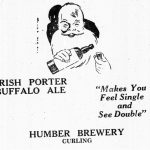


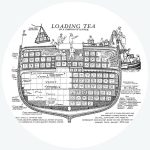





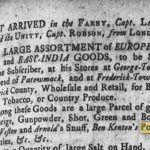
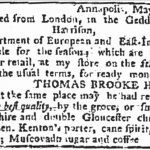
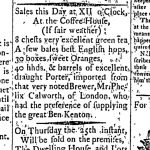


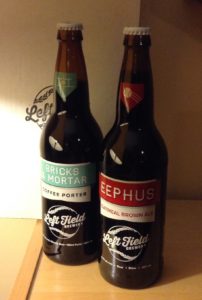 Is it just me or are samples you don’t ask for different? A wee giftie. A few brewers still send me stuff like these two beers from Toronto’s
Is it just me or are samples you don’t ask for different? A wee giftie. A few brewers still send me stuff like these two beers from Toronto’s